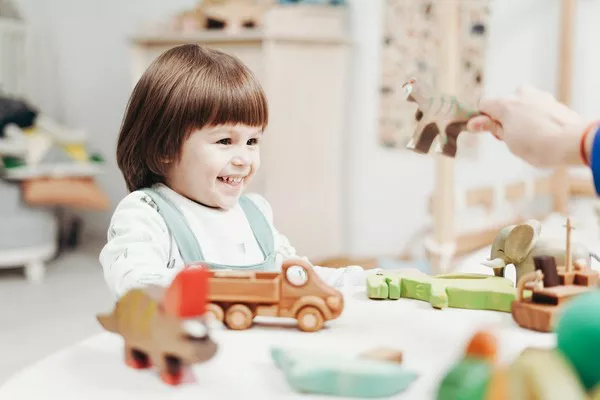In the exciting journey of parenthood, caring for a newborn involves mastering various aspects, and one fundamental aspect is diapering. Understanding how many diaper changes a newborn needs is crucial for their comfort, hygiene, and overall well-being. In this comprehensive guide, we’ll delve into the intricacies of newborn diaper changes, providing insights, tips, and expert suggestions to ensure you navigate this essential aspect of parenting with confidence.
1. The Basics of Newborn Diaper Changes:
Diaper changes for newborns are more frequent than one might expect. On average, a newborn requires around 8 to 12 diaper changes per day. The frequency can vary based on factors such as the baby’s age, feeding patterns, and individual needs.
Age Matters:
Newborns, especially in the first few weeks, tend to have more frequent bowel movements. As your baby grows, the number of diaper changes may gradually decrease. For the first month, be prepared for up to 12 changes a day, gradually tapering off as your baby’s digestive system matures.
Feeding Patterns:
Breastfed babies may have more frequent bowel movements than formula-fed ones. Breast milk is easily digestible, leading to more frequent diaper changes. Understanding your baby’s feeding patterns can help you anticipate and manage their diapering needs effectively.
Individual Variations:
Every baby is unique, and so are their diapering needs. Some newborns may require more changes due to sensitive skin or other factors. Pay attention to your baby’s cues and adjust the frequency accordingly.
2. Signs that Your Newborn Needs a Diaper Change:
Recognizing the signs that your baby needs a diaper change is essential in ensuring their comfort and preventing diaper rash.
Check for Wetness:
Feel the diaper to check for wetness. Modern diapers often have indicators that change color when wet, making it easier for parents to identify when a change is needed.
Monitor Bowel Movements:
Keep track of your baby’s bowel movements. If your baby has soiled their diaper, it’s crucial to change it promptly to prevent irritation and discomfort.
Pay Attention to Cues:
Babies communicate in various ways. If your newborn is fussy, restless, or showing signs of discomfort, it could be an indication that they need a fresh diaper. Responding promptly to these cues promotes a positive diapering experience for both parent and baby.
3. Tips for Efficient and Hygienic Diaper Changes:
Mastering the art of diaper changes involves more than just knowing when to change. Efficiency and hygiene are key factors for a smooth diapering routine.
Create a Diapering Station:
Set up a designated diapering area with all the essentials within arm’s reach. This includes diapers, wipes, diaper rash cream, and a changing mat. A well-equipped station makes the process quicker and more organized.
Proper Wiping Technique:
When wiping your baby, use gentle, unscented wipes to prevent skin irritation. Wipe from front to back for girls and in a downward motion for boys. This helps maintain proper hygiene and reduces the risk of infections.
Choose the Right Diaper Size:
Using the correct diaper size is crucial for preventing leaks and ensuring your baby’s comfort. Regularly check and adjust diaper sizes as your baby grows to accommodate their changing needs.
4. Diapering and Sleep: Striking the Right Balance:
Balancing diaper changes and your newborn’s sleep schedule is a common concern for many parents. Striking the right balance is essential for a well-rested baby and parents.
Nighttime Diaper Changes:
While it’s essential to meet your baby’s diapering needs, disrupting their sleep for frequent changes might not be necessary. Opt for high-absorbency diapers designed for overnight use to minimize nighttime disruptions.
Establish a Routine:
Creating a consistent diapering routine can help regulate your baby’s expectations, making them more cooperative during changes. Consider incorporating diaper changes into your bedtime routine to signal the transition from playtime to sleep.
5. Diaper Changes and Environmental Impact:
In the age of environmental consciousness, it’s worth considering the ecological impact of diaper changes and exploring sustainable options.
Choose Eco-Friendly Diapers:
Many brands now offer eco-friendly diaper options, reducing their environmental footprint. Consider making a switch to diapers made from biodegradable materials or those with eco-certifications.
Cloth Diapers as an Alternative:
Cloth diapers are gaining popularity due to their reusability and reduced environmental impact. While they require more maintenance, the long-term benefits for both the environment and your wallet can be significant.
In conclusion, mastering the art of newborn diaper changes involves a combination of understanding your baby’s needs, recognizing cues, and implementing efficient and hygienic practices. By following these tips and adapting them to your baby’s unique requirements, you’ll navigate the world of diapering with confidence, ensuring your newborn stays comfortable and content.


